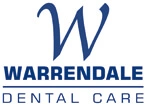Understanding dental restorations: a guide from fillings to dental implants

At our local dental clinic, Warrendale Dental, we understand the importance of maintaining good oral health. While regular check-ups and cleanings are essential for preventing tooth decay and gum disease, sometimes more extensive treatment is needed to restore damaged or missing teeth. This is where dental restorations come in.
Dental restorations are procedures that repair or replace damaged or missing teeth. They can range from simple fillings to more complex procedures, such as dental implants Herefordshire. Each type of restoration has its own strengths and weaknesses.
Common types of dental restoration
One of the most common dental restorations is the filling.
Fillings are used to repair small cavities caused by tooth decay. They are often made from amalgam (a mixture of metals) or composite resin (a plastic-like material), and gold. At our clinic, we offer both amalgam and composite resin fillings, depending on the patient’s preference and the location of the filling.
Another common type of restoration is a dental crown. A crown is a partial prosthetic tooth that is placed over damaged or decayed remains of a tooth. They are often recommended for teeth that are too damaged to be restored with a filling, but not so damaged that they need to be extracted.
Dental implants Herefordshire are a type of dental restoration that are used to replace missing teeth. They are designed to mimic the look, feel, and function of natural teeth. A dental implant is a titanium insert that is placed into the jawbone, where it acts as a replacement for the missing tooth’s root. Once the implant has healed, a custom-made dental crown is attached.
The benefits of dental implants Herefordshire are many. They provide a permanent and stable solution for missing teeth, allowing you to eat, speak, and smile with confidence. They also help to preserve the integrity of the jawbone and prevent the shrinkage that can occur when a tooth is missing. Additionally, oral implants can also be used to support dental bridges and dentures, making them a versatile restoration option.
Bridges and dentures are two other types of restoration that are used to replace missing teeth. Bridges are usually fixed restorations that are anchored to the natural teeth. A denture, on the other hand, is a removable restoration that is designed to replace multiple missing teeth.
The benefits of dental restorations
Dental restorations have a number of benefits. For one, they can improve the appearance of your teeth, giving you a more confident smile. Additionally, restorations can also improve your bite, making it easier to chew and speak. This can be especially important for those who have missing or damaged teeth.
Restorations can also prevent further tooth decay and gum disease by filling in the spaces left by missing teeth. This can help to protect the remaining natural teeth and keep your overall oral health in good condition.
In addition, dental restorations can also increase the longevity of your natural teeth. Fillings, crowns and bridges can help to preserve the remaining natural tooth structure, which can help to prolong the life of teeth.
Choosing the right dental restoration for you
At our clinic, we understand that each patient’s needs are unique. That’s why we take however long is required to thoroughly examine each patient and discuss all of the available options with them. We’ll provide you with all the information you need.

